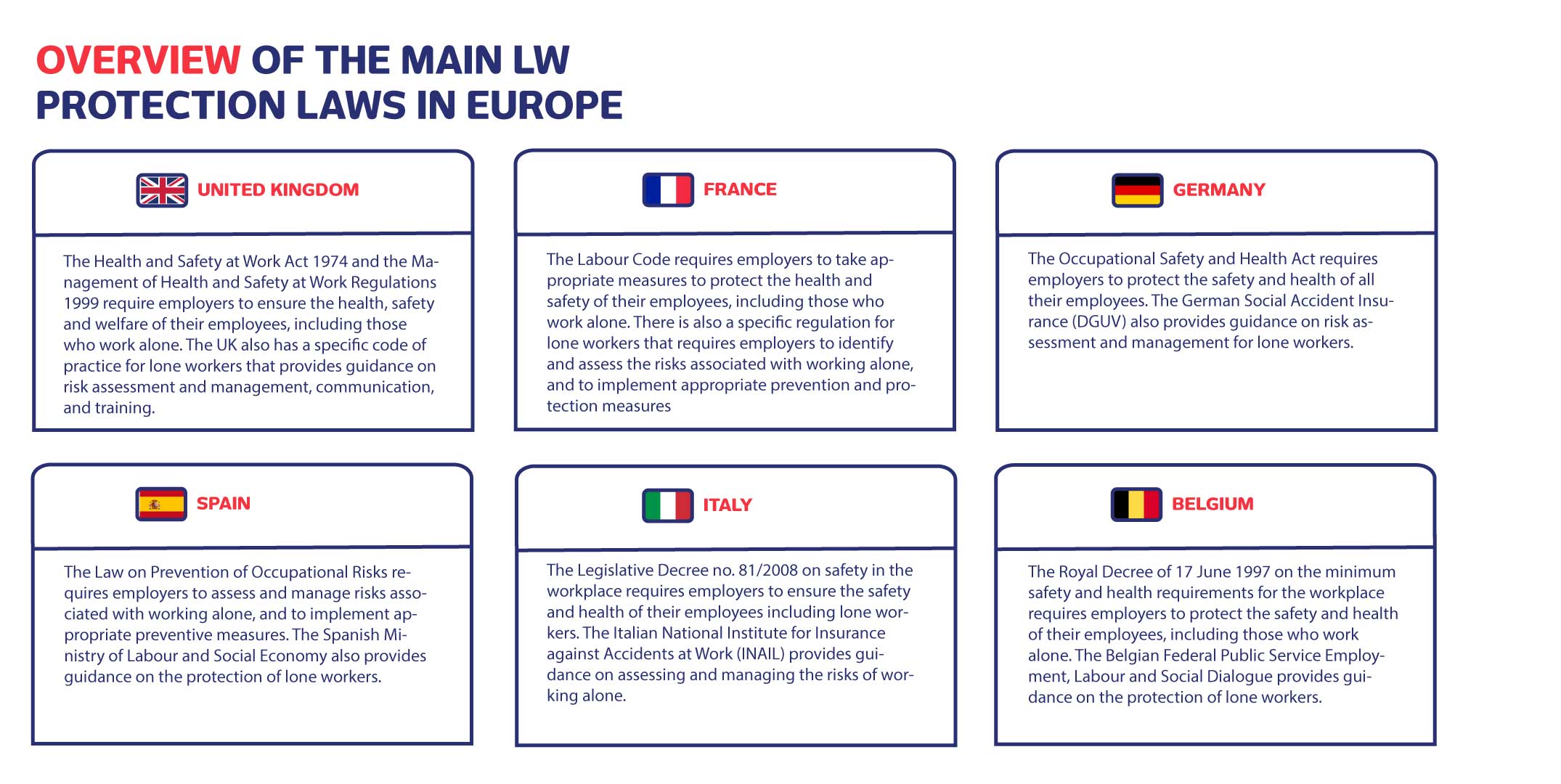Introduction
Definition of Lone Workers
Lone workers are employees who work without close supervision or without being part of a team.
Overview of Risks Faced by Lone Workers
Lone workers face unique challenges, such as working in hazardous environments, working with hazardous materials, and facing the risk of injury or accidents with no one around to help. These challenges can result in serious consequences for the safety and well-being of the workers.
Regulations for the Safety of Lone Workers
Overview of Relevant Regulations
The health and safety of lone workers is protected by various laws and regulations, both nationally and at the European level. Some of the key pieces of legislation include the Health and Safety at Work etc. Act 1974, the Management of Health and Safety at Work Regulations 1999, and the Working Time Regulations 1998.

Compliance Requirements for Employers
Employers have a legal obligation to ensure the safety and well-being of all their employees, including those who work alone. This means that they must carry out a risk assessment to identify any potential hazards and implement appropriate measures to mitigate these risks. In addition, employers must provide their lone workers with adequate training and support, and must keep accurate records of their health and safety procedures. Failure to comply with these regulations can result in enforcement action and fines.
European-level legislation such as the EU Framework for Health and Safety at Work and the EU Directive on Working Time also have a significant impact on the safety and rights of lone workers. Employers operating across multiple countries must ensure they are aware of and compliant with these regulations in all relevant jurisdictions.
Training Programs for Lone Workers
Training is a critical component in ensuring the safety of lone workers, as it equips employees with the knowledge and skills they need to identify and mitigate potential hazards in the workplace.
Importance of Employee Training
Training helps lone workers understand their role in maintaining their own safety, and it teaches them how to respond in the event of an emergency. It also provides them with the skills they need to identify and report hazardous situations in the workplace. Furthermore, training raises awareness about the specific dangers faced by lone workers and helps to create a safety culture in the workplace.
Key Components of Lone Worker Training Programs
A comprehensive training program for lone workers should cover the following key components:
- An overview of relevant regulations and compliance requirements for employers:
- Techniques for identifying and reporting hazardous situations
- Emergency response procedures
- Personal protective equipment
- Communication and reporting procedures
- Risk assessment and hazard identification
- Regular training updates and refreshers to ensure employees remain knowledgeable and competent.
It is important for employers to ensure that their lone worker training programs are regularly reviewed and updated to keep pace with changes in the workplace and to ensure that employees remain knowledgeable and competent.
Employer Obligations and Responsibilities
Employer Responsibilities for Lone Worker Safety
Employers have a legal and moral responsibility to ensure the safety of their lone workers. This includes providing them with the necessary training, equipment and support to carry out their work safely. Employers must also assess and manage any potential risks that may be faced by their lone workers. This includes conducting regular risk assessments, implementing health and safety procedures and providing adequate support systems, such as emergency response plans.
Liabilities in the Event of Incidents Involving Lone Workers
In the event of an incident involving a lone worker, employers can be held liable for any resulting harm or injury. This can include both physical and psychological harm, as well as financial compensation for lost income. Employers must therefore ensure that they have taken all reasonable steps to prevent such incidents, and that they have adequate insurance cover in place.
It is important to note that the specific obligations and responsibilities of employers may vary depending on the country or region in which they operate. However, in general, employers must ensure that they comply with all relevant health and safety laws and regulations, and that they provide their employees with a safe and secure working environment.
Conclusion
Protecting lone workers is a crucial responsibility for employers and society as a whole. In this article, we have discussed the regulations, training programs, and employer obligations and responsibilities for the safety of lone workers.
In terms of regulations, there are specific laws and compliance requirements in place to ensure the safety of lone workers. Employers must be aware of these regulations and ensure that they are adhering to them.
Training programs play an important role in the safety of lone workers. Employee training is essential for raising awareness of the risks faced by lone workers and for providing them with the necessary skills and knowledge to carry out their duties safely. Key components of lone worker training programs include risk assessment, emergency procedures, and personal safety techniques.
Employers have a responsibility to provide a safe working environment for their employees, including those who work alone. This includes taking steps to mitigate the risks associated with working alone, as well as having processes in place to respond to emergencies. Employers can also be held liable in the event of incidents involving lone workers, so it is important that they take their obligations seriously.
In conclusion, the importance of effective protection policies for lone workers cannot be overstated. By understanding the regulations, providing adequate training, and fulfilling their obligations and responsibilities, employers can ensure the safety and well-being of their employees who work alone.


